#Chucho Valdés
Text
El ADDA presenta el Festival Fijazz 2024 que estará arropado por los legendarios Salif Keita y Chucho Valdés
El ADDA ha presentado el Festival Fijazz 2024 que bajo el título ‘Originals’ reunirá este año en Alicante a artistas con personalidad propia para aunar el jazz más clásico con jazz fusión, el pop de autor o flamenco fusión. Dos grandes figuras serán las encargadas de inaugurar y clausurar la programación, el legendario Salif Keita abrirá los conciertos el día 4 de julio y Chucho Valdés pondrá el…

View On WordPress
0 notes
Text
The music of Cuban independence is presented by Dranoff 2 Piano
A two-concert celebration of Cuban Independence featuring Chucho Valdés' new work "Musical Journeys of Cuban Independence" by Dranoff 2 Piano #Dranoff2Piano #Cubanindependence
Dranoff International 2 Piano Foundation
A two-concert celebration of Cuban Independence featuring Chucho Valdés’ new work “Musical Journeys of Cuban Independence” by Dranoff 2 Piano
During Dranoff 2 Piano’s performance and poetic writings at the Miami-Dade County Auditorium on May 18th and 19, we will explore the evolution of Cuban music from independence from Spain and European music to the…

View On WordPress
0 notes
Text
https://open.spotify.com/track/3D590bJIeuNXLBPx9u7YI4...
#Hello Global World#Claritzel Miyares Hernández#singer and composer born in Holguín Cuba and resident in Spain.#He was inclined towards music#due to his family tradition#his brother is Carlos Miyares#a saxophonist who won a Grammy award in 2010#with the Afrocuban Messengers of maestro Chucho Valdés.#Kindly click on the below link to stream and listen to the music
1 note
·
View note
Text
youtube
Chucho Valdés Tribute to Irakere « Lorena’s Tango » | Jazz in Marciac 2015
9 notes
·
View notes
Text
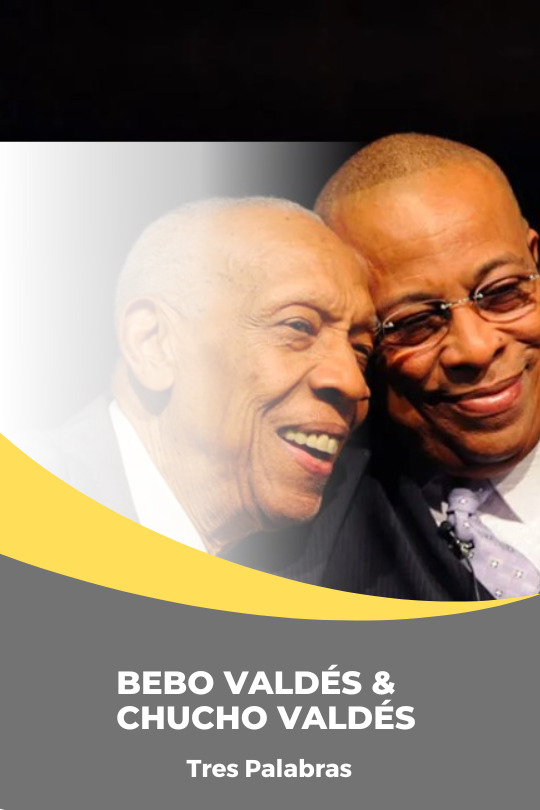
Bebo Valdés & Chucho Valdés – Tres Palabras
“Tres Palabras” (Osvaldo Farrés) from the album “Juntos Para Siempre”.
Bebo Valdés and Chucho Valdés received the Grammy Award for Best Latin Jazz Album at the 52nd Grammy Awards in 2010; they also won the Latin Grammy Award on the same field.
Bebo Valdés – piano
Chucho Valdés – piano
4 notes
·
View notes
Text
Interludio: “no” verbal
Olvidando por ratos cómo se siente llorar, espontáneamente sumergiéndome en mares de agua sucia con sales para calmar y suavizar la basura que el aire me adhiere sin yo siquiera quererlo.
Lloro por mí, porque olvidé abrazarme, porque muy de cerca choqué en el escenario que un domingo a las 9PM creé. Cargué las cubetas de agua para lavar el cuerpo y no lo lavé bien. Me agobió el calor en el baño.
Me hizo surtirme de granos que no suelo poseer para convertirme en guerrero, en uno de los más cargados de valentía, fuerza y poderes extraordinarios. Me hacen capaz de volar, de superar los miedos más inmundos e inhumanos, de dejar de escuchar a Voz y verme desde el frente, el frente que puedo sostener, el que no es tan alto ni animal.
Soy las mentiras que criaste para hacerme invisible, para hacerme pensar que soy algo menos palpable de lo que no eres y nunca has sido, ¿Por qué te vistes de humano? Si apenas me ves a los ojos y no te sabes disculpar, ¿Por qué te vistes de humano? Si no sabes estar en tu verdad; una mentira que ya no puede ni debería avanzar.
Tengo sueño. Sueño tierno y desnivelado, es tan caliente como esperar a que seriamente respondas. Pensando en cuántos intentos agoté, en que no tengo palabras, en que mi vocabulario se desgasta, y en que que tus manos gruesas llenas de pecados escondidos y falsedades agrietadas… todos los recuerdos mentirosos, mi pequeña cabeza capaz de crear nuevas versiones de un dolor que ya no debería abrazar, que ya no debería tener espacio en mí, pero en mí habita. Habita en el tercer espacio de las grandes importancias. En el sudor agrio, en las sienes perforadas, en un corazón verde y gris, en unos ojos tristes, ausentes y precariamente posicionados en una tela de esperas, de tu completo e inhumano “no” verbal.
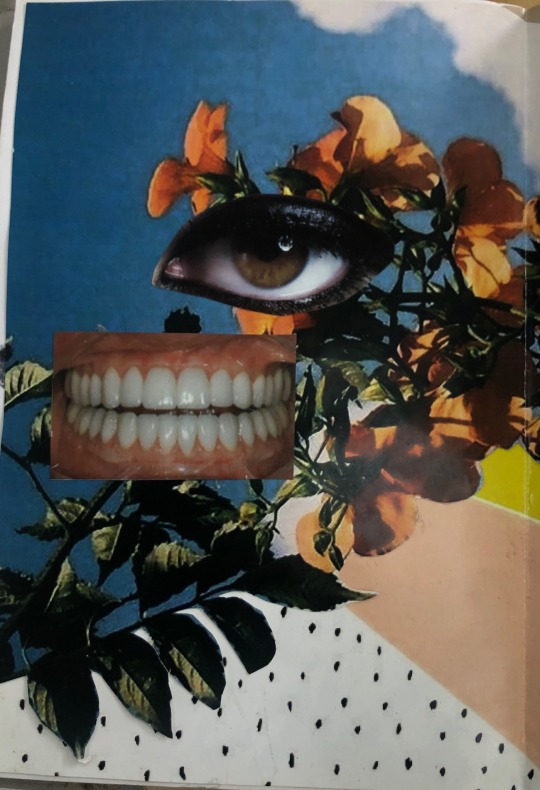
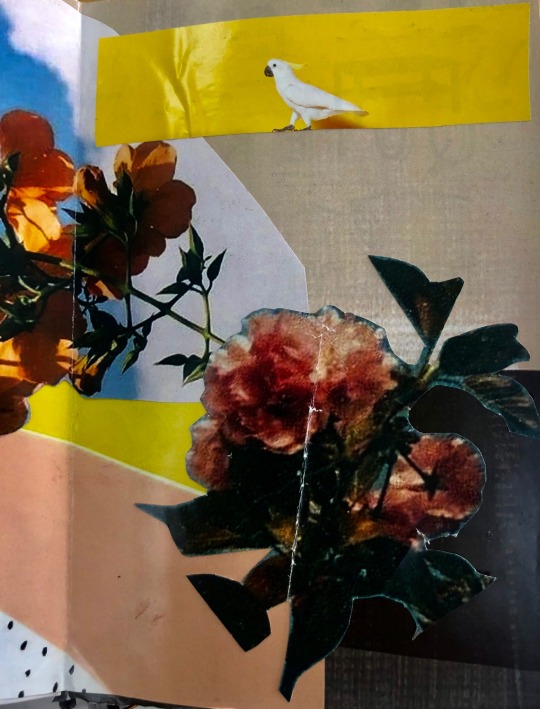
2 notes
·
View notes
Text

En particular la música ha inspirado mi trabajo, con auténticos íconos como Rita Montaner, Ernesto Lecuona, Rosita Fornés, Celeste Mendoza, Elena Burke, Bola de Nieve, Benny Moré, Celia Cruz, Farah María, Beatriz Márquez, Chucho Valdés…
“Para mí la música es algo muy grande y las personas que se dedican a ella merecen mi mayor respeto. Pienso que ser un artista, un cantante o una actriz, implica una responsabilidad tan grande que hay que admirarlo y destacarlo, y mi mayor aporte es graficarlo”.
He trabajado con figuras del teatro y la danza, por ejemplo, agrupaciones como los españoles Antonio Gades y Cristina Hoyos, los argentinos de Les Luthiers, la compañía de Lizt Alfonso, Danza Nacional de Cuba y otros muchos. Ello lleva que por razones de trabajo he tenido el placer de esta en países como Austria, Hungría, España, Italia y México.
2 notes
·
View notes
Video
youtube
Chucho Valdés & Kenny Garrett "El Güije" @Jazz_in_Marciac 2019
3 notes
·
View notes
Photo
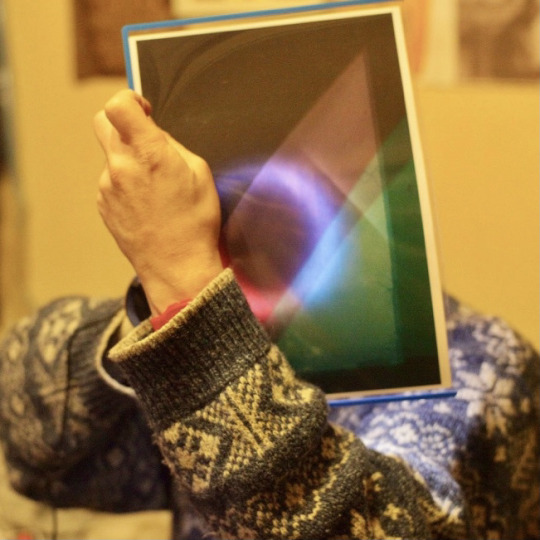
https://www.mixcloud.com/yabest/flights
Yabe Tadashi ♫ New Mixcloud
Chucho Valdés -Invitacion
Terri Lyne Carrington & Social Science -Pray The Gay Away
Andi Otto -Down The Charukeshi Road (feat. M.D.Pallavi)
The Paradise Bangkok Molam International Band -เดี่ยวแคนติดสูตร
Wolfgang Dauner -Lady Blue
United Future Organization -Loud Minority(Masuo Slow Mix)
Jules Brennan -Theme de Koto
Aïyb Dieng -Bôka Devotion
Yusef Lateef -Technological Homosapien
Twin Cosmos -Space Flight
Emile Londonien -Down The Big Street(Geoff Roy Remix)
Anadol -Eciflere Gel
Hieroglyphic Being -Brain Damage
Jack McDuff -Untitled D Minor (Live)
Wadadli Experience -We See Jah
Azar Lawrence -Bridge Into the New Age
2 notes
·
View notes
Photo
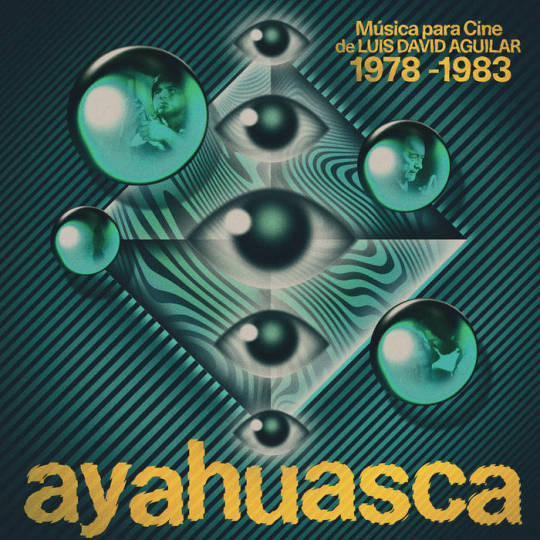
Ayahuasca: Música para cine de Luis David Aguilar (1978-1983) {Essential Sounds collection} by Luis David Aguilar
"Ayahuasca: Music for Film, by Luis David Aguilar (1978-1983)" compiles works by Luis David Aguilar, one of the most prolific composers of film scores in Peru. It shows the great versatility and avant-garde style that has distinguished his work.
Luis David Aguilar (Arequipa, 1950) occupies a fundamental place in the history of film music in Peru, not only because of the prolific nature of his work (which also includes music for television and advertising), but because of the singular, experimental style found in many of his scores. Aguilar's music blends modern academic composition with the use of native instruments, synthesizers, sound collages and a diversity of resources, which identify him as a key figure to understand a period of Peruvian music marked by the imprint of the avant-garde and the use of native sounds, which developed during the late 70's and the early 80's.
Aguilar belongs to the so called “Generation of the 70's”, along with Peruvian composers such as Walter Casas, Seiji Asato and Aurelio Tello, who were then immersed in the languages of contemporary classical music. But he also shares the spirit of renewal of a generation of musicians who came from the world of jazz and electronic experimentation such as Manongo Mujica and Arturo Ruiz del Pozo.
After his graduation from the National Music Conservatory, Luis David Aguilar studied at the Instituto Nacional de Teleducación, starting from 1976, which proved to be decisive. It allowed him to start a career as a composer of music for radio and television, and drove him away from the classical scene. With this experience in hand, he was then able to produce film music and to work in many recording studios in Lima. He also set up his own studio and, as a result, he is the owner of a large archive of recordings, which has been maintained without being published. “During those years I composed a lot of music: children's songs, jingles for various radio shows, as well as music for television series, etc.”, says Aguilar. “The great attraction for me was that all of the music I created was recorded immediately, and because of my academic training, I was able to write scores for symphonic orchestra. My purpose was to introduce the sounds of classical instruments in the auditory memory of a vast audience. I had never experienced this possibility before. As an academic composer, I created works that were rarely performed. Most of them gathered dust in different places or, because of my lack of order and frequent relocations, they simply got lost. But during this period, all of the music I wrote came to life. I was also able to work with different recording studios and use their fantastic technical resources. In addition, this situation allowed me to create job opportunities for classically trained musicians (who at that time were very poorly paid). Over any other consideration, this had a clear social function, and the experience was totally worthy for me. In large measure, this is why I stopped working in academic settings.”
Ayahuasca is an album that collects pieces from 1978 to 1983 and offers an overview of the different musical paths that Aguilar followed during his career as a soundtrack composer. The album opens with music from the film El viento del ayahuasca [The Wind of Ayahuasca] (1983), by director Nora de Izcue, performed by the National Symphony Orchestra and Choir of Cuba under the baton of Luis David Aguilar, with Chucho Valdés on piano. Recorded at the ICAIC studios (Cuba), it is an ambitious orchestral and vocal composition, in which you can hear the beginning of the famous melody of “Mujer Hilandera” [Female Weaver], popularized by the Amazonian cumbia group Juaneco y su Combo, which serves as an introduction to the sound world of the jungle, a dense and hypnotic atmosphere that, without a doubt, places this work as one of the most important compositions of the author's repertoire.
The next track is the music for the documentary Anónimo cotidiano [Anonymous Everyday] (1979), by director Jorge Rey, a unique experimental piece for synthesizers (played by Aguilar), drums and percussion (played by Manongo Mujica), with the addition of various Andean instruments (panpipes, charango, among others). It is a clear example of fusion of sound experimentation and timbres from the Andean world.
And finally Los constructores [The Builders] (1978), by director José Carlos Huayhuaca, a salsa which incorporates unusual sounds of tubular bells and prepared pianos.
About this diversity of genres, the composer says: “Creating film music gave me a wide perspective, because of the possibility of using all the composition techniques that I studied, both traditional and avant-garde, and even inventing some of my own, in addition to giving me the versatile craft that is needed”.
Ayahuasca: Music for Film by Luis David Aguilar (1978-1983) is the second album by Aguilar released by Buh Records, following the celebrated Hombres de Viento/Venas de la Tierra (1978-1982), appeared in 2015. The album is published in vinyl format, in a limited edition of 300 copies, as part of the Essentials Sounds collection. It includes a booklet with notes by Luis David Aguilar. The audio has been remastered from the original reel tapes by Aldo Montalvo. The artwork and design is by About Studio.
This project was awarded with the Economic Stimulus for Culture 2021 of the Ministry of Culture of Peru. クレジット2022年9月23日リリース
A-side
Track 1: El viento del ayahuasca [The Wind of Ayahuasca] (1983)
Length: 19:32
Performed by the National Symphony Orchestra and Choir of Cuba, conducted by Luis David Aguilar, with a brief piano solo by Chucho Valdés.
B-side
Track 1: Anónimo cotidiano [Anonymous Everyday] (1979)
Length: 13:58
Personnel:
Percussion: Manongo Mujica
Synthesizers: Luis David Aguilar
Vocals: María del Carmen Valdizán
Zampoñas, Charango and Bombo: David Sandoval
Track 2: Los constructores [The Builders] (1978) (Fragment)
Length: 3:00
Personnel:
Percussion 1: Aníbal Torres
Percussion 2: Hugo Bravo
Bass: Carlos Wong
Tubular bells: Luis Beteta
Flute: César Vivanco
Trumpet: Baltazar Herrera
Trombone: Luis Calixto
Saxophone 1: Jesús Benítez
Saxophone 2: Bienvenido Vílchez
Piano: Hernán Huamán
Music composed and compiled by Luis David Aguilar
Mastered by Aldo Montalvo
Texts by Luis David Aguilar
Translation by Alonso Almenara
Art and Design by About Studio
Buh Records
BR162
3 notes
·
View notes
Photo
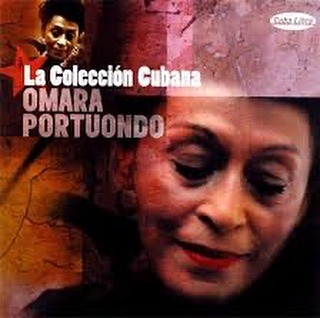
Omara Portuondo Peláez (born October 29, 1930) is a Cuban singer and dancer. A founding member of the popular vocal group Cuarteto d'Aida, she has collaborated with many important Cuban musicians during her long career, including Julio Gutiérrez, Juanito Márquez, and Chucho Valdés. She was known for her rendition of boleros, she has recorded in a wide range of styles from jazz to son Cubano. Since 1996, she has been part of the Buena Vista Social Club project, touring extensively and recording several albums with the ensemble. She won a Latin Grammy Award for Best Contemporary Tropical Album in 2009 and a Latin Grammy Lifetime Achievement Award in 2019, and she received three Grammy Award nominations. Born in the Cayo Hueso neighborhood of Havana, she had three sisters. Her mother, Esperanza Peláez, came from a wealthy family of Spanish ancestry and had created a scandal by running off with and marrying an African American baseball player, Bartolo Portuondo. She joined the dance group of the Cabaret Tropicana in 1950, following her elder sister, Haydee. She danced in the Mulatas de Fuego in the theatre Radiocentro, and other dance groups. The two sisters used to sing for family and friends, and they performed in Havana clubs. Portuondo and Haydee then in 1947 joined the Loquibambia Swing, a group formed by the blind pianist Frank Emilio Flynn. #africanhistory365 #africanexcellence https://www.instagram.com/p/CkS7xAdL-ov/?igshid=NGJjMDIxMWI=
1 note
·
View note
Link
Check out this listing I just added to my Poshmark closet: Los Años de Oro - Magia Negra.
0 notes
Link
Rodrigo Zambrano lanza disco "Gracias, Maestro" homenaje a Chucho Valdés
0 notes
Text
Los músicos Chucho Valdés y Concha Buika se presentaron en un concierto íntimo en Buenos Aires
http://dlvr.it/T0t0W0
0 notes
Text
What Kind of Music Do People Listen to in Cuba?
When it comes to the rich and diverse music scene of Cuba, one cannot overlook the significant contributions of its famous Cuban singers. These talented artists have not only shaped the auditory landscape of the country, but they have also left an indelible mark on the global music industry. From the soulful melodies of bolero to the infectious rhythms of salsa and the revolutionary sounds of nueva trova, Cuban singers have captured the hearts of audiences worldwide with their unique voices and captivating performances.
Exploring the Vibrant Music Scene of Cuba
Cuban singers, with their unique styles and powerful vocals, have played a pivotal role in shaping the diverse musical landscape of Cuba. In this article, we will explore the captivating world of Cuban music and delve into the genres that have been made famous by remarkable Cuban singers.
1. Son - The Root of Cuban Music
Son is a genre that emerged in the early 20th century and continues to captivate audiences with its infectious rhythms and heartfelt lyrics. Blending Spanish guitar with Afro-Cuban percussion, Son represents the soul of Cuban music. Its syncopated beats and lively dance moves create an irresistible energy that permeates the air. Son tells stories of love, joy, and the struggles of everyday life, offering a glimpse into the heart and soul of the Cuban people. With its timeless melodies and enduring popularity, Son has become a cherished cultural treasure, embodying the rich musical heritage of Cuba and serving as a foundation for the diverse genres that have emerged from the island.
2. Salsa - The Global Phenomenon
Salsa, which is born in Cuba, has transcended borders and captivated audiences worldwide. This vibrant genre, influenced by Cuban son and other Afro-Cuban rhythms, has been propelled to new heights by some of the most famous Cuban musicians. Celia Cruz, the beloved Queen of Salsa, with her electrifying voice and charismatic stage presence, became an icon of the genre and popularized salsa internationally. Another legendary figure is Issac Delgado, known for his soulful interpretations and innovative approach to salsa. These influential musicians, along with many others, have brought the infectious rhythms and passionate spirit of Cuban salsa to the forefront of the global music scene, making it a cherished genre enjoyed by millions worldwide.
3. Afro-Cuban Jazz - A Melting Pot of Styles
Afro-Cuban jazz is a captivating genre that melds the improvisational nature of jazz with the vibrant rhythms and melodies of Afro-Cuban music. This fusion creates a unique and electrifying sound that mesmerizes listeners. With its pulsating percussion, complex harmonies, and soulful melodies, Afro-Cuban jazz takes audiences on a captivating musical journey filled with passion and energy. Pioneers like Chucho Valdés and Irakere have pushed the boundaries of the genre, infusing it with elements of funk and rock to create a dynamic and innovative musical experience. Afro-Cuban jazz not only showcases the immense talent of its musicians but also represents the cultural richness and diversity of Cuba.
4. Timba - A Modern Cuban Sound
Timba is a dynamic and modern genre of music that emerged in Cuba during the 1990s. It is a fusion of various musical styles, including salsa, jazz, funk, and hip-hop, resulting in a high-energy and infectious sound. Timba is characterized by its complex arrangements, syncopated rhythms, and vibrant performances. It has gained immense popularity among younger generations in Cuba and beyond, with artists like Los Van Van and NG La Banda leading the way. Timba represents a new wave of Cuban music that pushes the boundaries and appeals to contemporary tastes, infusing traditional elements with modern influences. Its irresistible beats and catchy melodies make it impossible to resist moving to the rhythm and experiencing the sheer joy of this captivating genre.
5. Bolero - The Soulful Serenade
Bolero, a genre of traditional Cuban music, holds a cherished place in the hearts of Cubans and music lovers worldwide. With its soulful melodies, heartfelt lyrics, and captivating rhythms, bolero evokes a sense of nostalgia and romance. Originating in the late 19th century, this genre has stood the test of time, becoming a timeless expression of love and longing. Bolero showcases the rich cultural heritage of Cuba, embodying the essence of traditional Cuban music. Artists like Benny Moré and Ibrahim Ferrer have left an indelible mark on the genre, enchanting listeners with their passionate interpretations. Whether performed in an intimate setting or enjoyed through recordings, bolero continues to captivate audiences, transcending borders and generations.
The music of Cuba is a captivating tapestry of genres that reflects the nation's vibrant cultural heritage and diverse influences. From the rhythmic beats of son and salsa to the soulful melodies of bolero and the socially conscious lyrics of nueva trova, Cuban music offers a rich and dynamic auditory experience. Whether it's the infectious energy of timba or the nostalgic serenades of bolero, the music of Cuba holds a special place in the hearts of its people. It is a powerful form of expression that unites communities, preserves traditions, and celebrates the indomitable spirit of the Cuban people.
1 note
·
View note